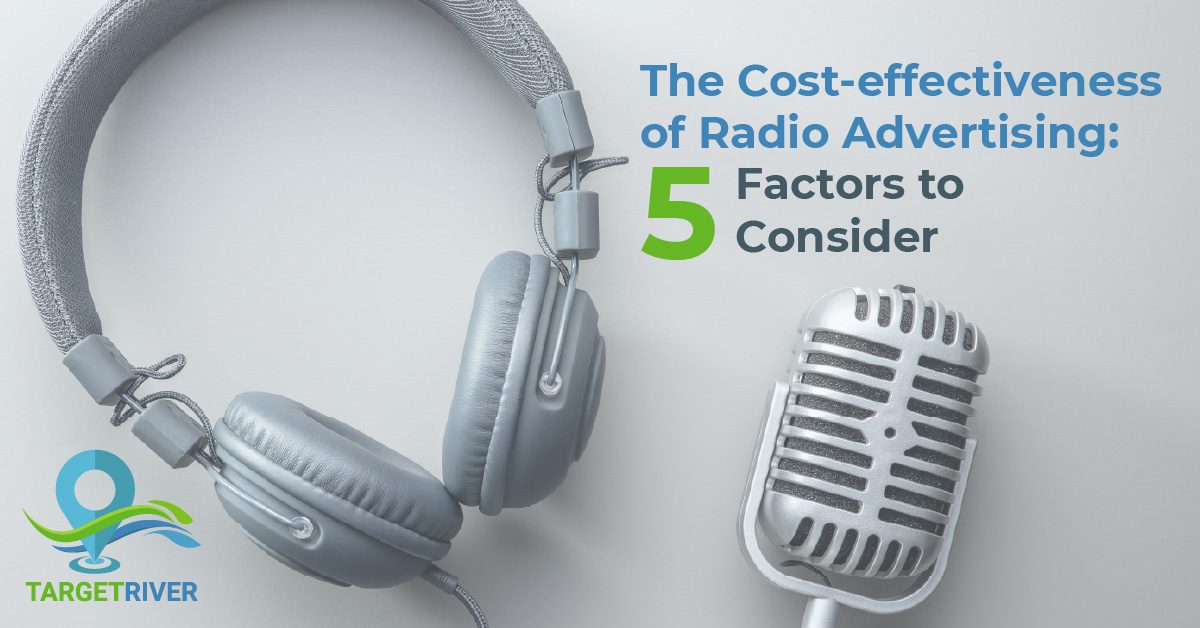Radio advertising can be a highly effective marketing strategy for businesses, but it’s crucial to ensure campaigns are budget-friendly. One of the benefits of radio advertising is that it can be more affordable than other forms of advertising, such as TV or print ads. Additionally, radio advertising can be highly selective, allowing businesses to target specific demographics and regions. By understanding their target audience and choosing the right radio stations and frequencies, businesses can maximize the impact and reach of their campaigns while keeping costs in check. Target River takes a 3 step approach when optimizing radio campaigns: whom are we trying to reach, which technique is best to deliver your message, and what will that message contain?
1. Where and When
The process of buying radio advertising can seem like a lot at first, but it can be a cost-effective way to launch your radio campaigns to reach new customer segments and grow your company. First, it’s valuable to understand radio advertising and how it works. Radio advertising is done by purchasing airtime on a radio station to promote a product or service for your company. Radio advertising can come in many forms, including pre-recorded scripts, live speeches, and sponsorships. The cost of radio advertising depends on factors such as the ad length, when the ad airs, and the station’s popularity. It’s worth your time to research and determine which stations and time slots best fit your target audience. Consider factors such as the station’s format, statistics about the popular timeslots, and the regions that these stations cover. Once you’ve identified the stations you want to advertise, you can contact them to inquire about pricing and availability. Target River’s select team of radio experts take the time to analyze your company: values, target market, and industry. Then, using a mix of terrestrial radio and streaming platforms, Target River determines the proper stations and air times to coordinate your company.
2. Ad Design
When it comes to creating your radio advertisement, there are a few factors that require consideration. To begin, your ad should be attention-grabbing and memorable. Consider using a catchy jingle or a unique slogan to capture your listeners’ attention. Additional production-related fees may be attached depending on other features, voices, or sound effects. It’s also essential to keep your message simple and concise. Avoid cramming too much information into your ad, and instead, focus on communicating one clear and compelling message. This will be very important when considering the length you want your ad to be. Another critical factor to consider is the background music. Target River has an excellent creative team designed to take your company and its values and reflect that within your radio advertisement using thoughtful scriptwriting and paid actors sourced by Target River.
3. Formatting and Length
The formatting and length of your radio ad can significantly impact the cost effectiveness of your radio advertising campaign. Longer ads and highly produced formats may be more expensive as far as radio station fees accommodate for the time, while shorter, simpler ads may be more affordable, allowing you to run them more frequently. However, it’s important to balance the value associated with making a more elaborate radio ad. A clear, well-crafted ad that connects with your target audience can be worth the price. You can create a powerful, cost-effective radio ad by focusing on the key message, highlighting advantages, and crafting a call-to-action that encourages listeners to be proactive. Ultimately, your ad should be determined by what is most effective for your target audience and budget, as well as how you want your audience to view your brand.
4. Station Selection
When planning a radio advertising campaign, it’s essential to understand the fees associated with radio stations. Typically, radio stations charge based on the number of listeners your ad can reach. Another good factor to evaluate is the area these stations serve. Stations serving larger areas or areas specific to your target market require higher fees. It’s important to work with the station to negotiate fees and develop a campaign that fits within your budget. Sometimes, making ad packages or buying airtime during less popular hours can help reduce costs. Understanding the fees and negotiating with the station can help you to create a cost-effective radio advertising campaign that reaches your target audience and delivers results. With strategic selection and a focus on value, radio advertising can effectively build brand awareness and drive customer engagement.
5. Analytics
Ad analytics play a crucial role in determining the effectiveness and cost-effectiveness of radio advertisements. By tracking key metrics such as reach, engagement, and response rates, businesses can gain key insights into the success of their ads and make data-driven decisions to elevate their radio advertising efforts. These analytics can help businesses tweak their targeting, adjust the ad content, and
optimize their ad formats to maximize their value. By watching and analyzing ad performance, businesses can ensure they put funds into the most effective solutions, ultimately helping them reach their goals efficiently. One way Target River can stand out is through its tracking efforts. Target River takes the time to track and analyze your radio campaign results and continuously adjust so that your company stays ahead of its competition.
Bonus read:
Top 8 Tips for Creating a Successful Radio Campaign
Are Radio Advertisements Still Effective?

